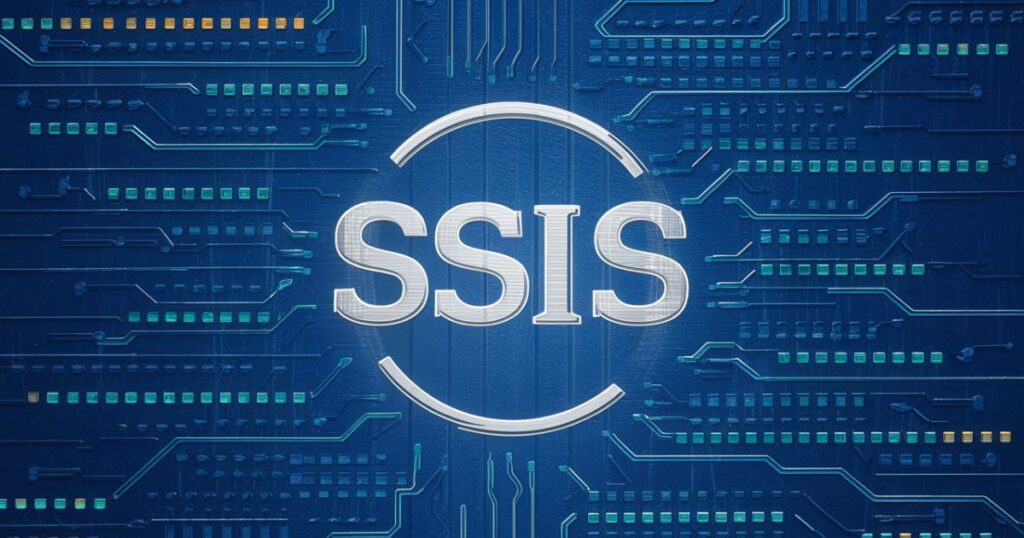SSIS 698 is Microsoft’s latest data integration powerhouse. It’s a robust tool for extracting, transforming, and loading data from various sources. This version offers enhanced features for streamlining complex data processes and improving overall efficiency.
Imagine a world where your data works for you, not against you. That’s what SSIS 698 brings to the table. It’s like having a Swiss Army knife for your data needs. With SSIS 698, you’re not just managing data; you’re unleashing its full potential.
This tool is changing the game for businesses across the USA. It offers real-time processing, advanced data quality services, and improved package management. SSIS 698 isn’t just an upgrade; it’s a complete revolution in how we handle data integration.
What is SSIS 698?
SSIS 698, or SQL Server Integration Services 698, is Microsoft’s latest offering in the realm of data processing tools. It’s not just another ETL software; it’s a comprehensive data management platform designed to tackle the most complex information handling tasks with ease. This Microsoft integration solution builds on the strengths of its predecessors, offering enhanced capabilities for data manipulation and transformation.
At its core, SSIS 698 is all about making your data work for you. It streamlines the process of extracting data from various sources, transforming it to fit your needs, and loading it into your target systems. Whether you’re dealing with large datasets or need to perform real-time analytics, SSIS 698 has got you covered. It’s the Swiss Army knife of data management, equipped to handle everything from simple data transfers to complex workflow orchestration.
Advanced Features of SSIS 698

Real-Time Data Processing
Gone are the days of waiting hours for your data to be processed. SSIS 698 brings live information processing to the forefront, enabling instant updates and streaming data capabilities. This means you can make decisions based on the most up-to-date information available, giving you a competitive edge in fast-paced markets.
Data Quality Services
Information accuracy is paramount in today’s business environment. SSIS 698’s data quality services ensure that your data is not just abundant, but also reliable. With advanced data cleansing and profiling tools, you can trust that your analytics are based on solid, validated information.
Enhanced Data Flow
The enhanced data flow features in SSIS 698 take data movement to the next level. It’s like upgrading from a country road to a superhighway for your information pipeline. With improved data streaming capabilities, you can handle larger volumes of data faster than ever before, without compromising on accuracy or security.
Improved Package Management
Managing complex data integration tasks has never been easier. SSIS 698’s improved package management features offer superior process automation and task scheduling. This means less time spent on manual oversight and more time focusing on strategic initiatives that drive your business forward.
How SSIS 698 Streamlines Processes
SSIS 698 isn’t just about handling data; it’s about transforming how your entire organization operates. By automating data synchronization and merging processes, it frees up your team to focus on high-value tasks. Imagine cutting your data processing time in half, or being able to integrate new data sources in a matter of hours instead of weeks. That’s the kind of efficiency SSIS 698 brings to the table.
The streamlining effects of SSIS 698 ripple throughout your organization. From marketing teams getting faster insights into campaign performance to finance departments producing reports in record time, the impact is felt across the board. It’s not just about doing things faster; it’s about doing them smarter, with more accuracy and less manual intervention.
SSIS 698 and Business Intelligence
Role in BI Solutions
In the world of BI analytics, SSIS 698 is a game-changer. It serves as the backbone of robust decision support systems, ensuring that your data-driven insights are based on the most comprehensive and up-to-date information available. By seamlessly integrating with various BI tools, SSIS 698 creates a smooth pipeline from raw data to actionable intelligence.
Impact on Decision-Making
The real power of SSIS 698 lies in its ability to transform data-driven decisions. By providing real-time, accurate data, it empowers leaders to make informed choices quickly. This can mean the difference between seizing a market opportunity and missing out, or identifying and addressing a problem before it escalates.
Implementation of SSIS 698

Implementing SSIS 698 is a strategic move that requires careful planning and execution. The process typically involves assessing your current data landscape, identifying key integration points, and mapping out your desired data flows. It’s crucial to involve stakeholders from across your organization to ensure that the implementation aligns with business goals and user needs.
One of the key advantages of SSIS 698 is its flexibility in deployment strategy. Whether you’re looking at a phased rollout or a full-scale implementation, the platform can be tailored to fit your needs. Many organizations find success in starting with a pilot project, focusing on a specific data integration challenge, and then expanding the use of SSIS 698 as they see the benefits in action.
Read More : Unlocking the Power of 127.0.0.1:62893: Your Gateway to Secure and Efficient Local Development
Best Practices for Utilizing SSIS 698
To get the most out of SSIS 698, it’s essential to follow some best practices. First and foremost, invest in training for your team. The more your staff understands the capabilities of the tool, the more effectively they can leverage it. Regular audits of your data flows and integration processes can help identify bottlenecks and opportunities for optimization.
Security should always be a top priority when dealing with data. SSIS 698 offers robust security features, but it’s up to you to implement them properly. This includes setting up appropriate access controls, encrypting sensitive data, and regularly updating your security protocols. Remember, a data integration tool is only as secure as the practices surrounding its use.
SSIS 698 and Business Intelligence
The synergy between SSIS 698 and business intelligence cannot be overstated. By providing clean, consolidated data, SSIS 698 lays the foundation for powerful analytical reporting. It enables the creation of comprehensive dashboards that give decision-makers a 360-degree view of their business operations.
Case studies have shown remarkable improvements in BI capabilities after implementing SSIS 698. For example, a major retail chain reported a 40% reduction in time spent on data preparation, allowing their analysts to focus more on deriving insights rather than wrangling data. Another success story comes from a financial services firm that was able to integrate real-time market data into their risk models, significantly improving their ability to manage market volatility.
Comparing SSIS 698 with Other Data Integration Tools
SSIS 698 vs. Talend
While both SSIS 698 and Talend are powerful data integration tools, they cater to different needs. SSIS 698 shines in Microsoft-centric environments, offering seamless integration with other Microsoft products. Talend, on the other hand, is known for its open-source roots and cross-platform compatibility.
SSIS 698 vs. Informatica
Informatica has long been a leader in the enterprise data integration space. However, SSIS 698 is quickly catching up, offering comparable features at a more competitive price point. The choice often comes down to existing infrastructure and specific use cases.
SSIS 698 vs. Apache Nifi
Apache Nifi is a popular choice for those looking for an open-source solution. While it offers great flexibility, SSIS 698 generally provides a more user-friendly interface and tighter integration with enterprise-grade tools, especially in the Microsoft ecosystem.
Common Challenges and Solutions
Even with a tool as powerful as SSIS 698, challenges can arise. Common issues include performance bottlenecks with very large datasets, compatibility problems with legacy systems, and difficulties in managing complex workflows. However, these challenges often have solutions. For performance issues, optimizing your data flows and leveraging the parallel processing capabilities of SSIS 698 can make a big difference.
When dealing with legacy systems, custom connectors or staging areas can bridge the gap. And for complex workflows, breaking them down into smaller, manageable packages can improve maintainability and troubleshooting. The key is to approach challenges methodically and leverage the vast knowledge base and community support available for SSIS 698.
Future Trends in SSIS 698 Development

The future of SSIS 698 looks bright, with ongoing development focused on enhancing its capabilities in areas like cloud integration, AI-powered data transformations, and even more robust real-time processing. We can expect to see tighter integration with cloud platforms, making it easier to work with data across hybrid environments.
Another exciting trend is the incorporation of machine learning algorithms to automate complex data transformation tasks. This could potentially revolutionize how businesses handle data cleansing and enrichment. As data privacy regulations evolve, we’re also likely to see enhanced features for data governance and compliance baked into future versions of SSIS 698.
Conclusion
SSIS 698 is a game-changer in the world of data integration. It streamlines complex processes, making data management easier and more efficient than ever before. With its advanced features like real-time processing and improved data quality services, it’s helping businesses make smarter, faster decisions based on accurate information.
Implementing SSIS 698 can transform how your organization handles data. It’s not just about keeping up with the competition; it’s about staying ahead. Whether you’re a small business or a large enterprise, SSIS 698 offers the tools you need to unlock the full potential of your data. By revolutionizing your data integration process, you’re setting your business up for success in today’s data-driven world.
FAQs
What makes SSIS 698 different from previous versions?
SSIS 698 offers enhanced real-time processing, improved data quality services, and better integration with cloud platforms.
Can SSIS 698 handle big data?
SSIS 698 is designed to work with large datasets and can integrate with big data platforms.
Is SSIS 698 suitable for small businesses?
While it’s powerful enough for large enterprises, SSIS 698 can be scaled for small business needs as well.
How does SSIS 698 ensure data security?
It includes features like encryption, access controls, and auditing to maintain data security throughout the integration process.
Can SSIS 698 integrate with non-Microsoft data sources?
It supports a wide range of data sources beyond the Microsoft ecosystem.

With three years of experience in website development, I share the latest in technology on my blog, [TechTimy]. Join me for insights, trends, and updates in the tech world.



